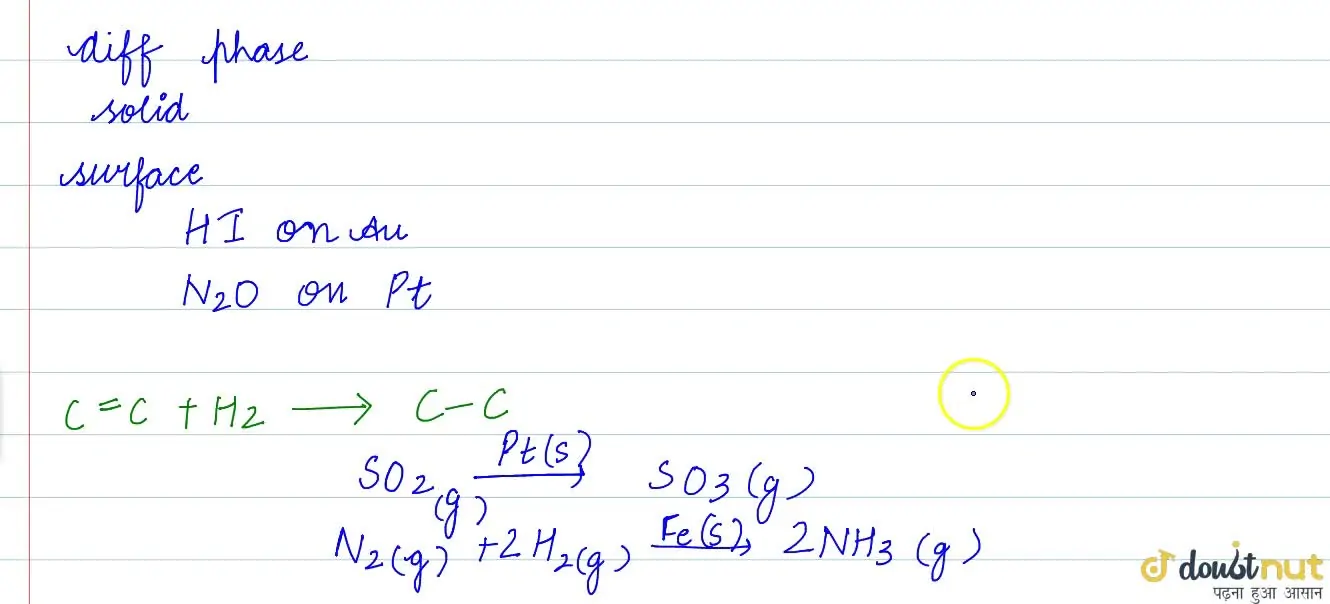Homogeneous And Heterogeneous Catalysts
Homogeneous And Heterogeneous Catalysts
What is a Catalyst?
In the world of chemical reactions, catalysts are the substances that alter the pace of reaction by changing the path of the chemical reaction. A catalyst can increase or decrease the rate of the reaction. The catalysts are used to dissociate the intra-molecular bonds present in the particles of different molecular compounds.
Some of the salient features of catalysts are:
• Catalyst does not initiate a reaction.
• Catalyst does not change or get destroyed in the reaction.
• Catalysts react with reactants to form intermediates and promote the formation of the end product. Once the catalytic reaction is finished, a catalyst can regenerate itself.
A catalyst can be used in the solid, liquid or gaseous phase. The reaction, which includes a catalyst in their system, is known as catalytic reactions.
Types of Catalysts
There are different types of catalysts that are utilized depending upon the need or necessity of the chemical reaction. They are as follows:
Positive Catalysts
Catalysts that increase the rate of a reaction are called positive catalysts. It increases the rate of reaction by bringing down the activation energy requirements with the end goal that reaction molecules are change
d over into products, consequently the yield percentage of products increases.
Negative Catalysts
Catalysts that decrease the rate of a chemical reaction are called negative catalysts. It decreases the rate of a chemical reaction by increasing the activation energy, which reduces the number of reactant molecules to convert into products and thus, the rate of reaction decreases.
Catalytic Promoters
A chemical substance that increases the catalyst activity is called promoters.
Catalytic Inhibitors
A chemical substance that decreases the catalyst activity is called inhibitors.
Catalysis and its Types
Catalysis is a process that includes a catalyst to increase the rate of a reaction.
Types of Catalysis
Based on nature and the physical condition of substance utilized in the concoction reaction, catalysis is of two sorts
- Homogeneous catalysis
- Heterogeneous catalysis
Homogeneous Catalysis
The catalysis where the catalyst used in the chemical reaction and the reactants are in a similar phase of matter, that procedure is referred to as homogeneous catalysis.
For instance, oxidation of sulphur dioxide during lead chamber process.
In Lead chamber process, Nitric oxide gas is used as catalysis. It is used in the manufacture of sulphuric acid.
2SO2(g)+O2(g) ⟶ 2SO3(g)
NO(g)
In this reaction, the reactants along with catalyst NO is also a gas hence it is homogeneous catalysis.
Process of Homogeneous Catalysis
This type of catalysis occurs by forming an intermediate compound.
In the oxidation of SO2 into SO3 in the above reaction. The nitric oxide (NO) gas is the catalyst.
It reacts with SO2 (gas) to form SO2 and “NO2” as an intermediate compound.
2SO2(g)+O2(g) ⟶ 2SO3(g)
NO(g)
Initially, NO gas combines with oxygen (O) to form nitrogen dioxide (NO2). Thus, so formed nitrogen dioxide behaves as an intermediate compound reacting eventually with SO2 to form sulphur trioxide and nitric oxide (NO), which is the catalyst.
2NO(g) + O2(g) → 2NO2(g)
2SO2 + 2NO2 → 2SO3(g) + 2NO(g)
Heterogeneous Catalysis
In heterogeneous catalysis, the reactants and catalyst used in that chemical reaction are in different phase of matter.
For instance, formation of sulphuric acid through the contact process.
The oxidation of sulphur dioxide is a crucial step in the contact process. In this oxidation reaction, the reactants, sulphur dioxide and oxygen are in the gaseous phase, and the catalyst, vanadium pentoxide, is a solid catalyst. Thus, reactants and catalyst are in a different phase of matter.
Process of Heterogeneous Catalyst
This type of catalysis includes adsorption and intermediate compound formation. The reactant molecule gets adsorbed on the surface of the catalyst. They combine to form an activated complex that is an intermediate compound. Eventually, the intermediate compound decays to yield end products. After the formation of the product, these intermediate compounds get desorbed from the surface.
One such example is the hydrogenation of ethene into ethane on the nickel surface.
Similar Questions
Catalyst and Catalysis || Homogenous and Heterogenous Catalysis || Positive, Negative, Auto and Induced Catalysis || Promoters and Poisons
View SolutionExplain the difference between a homogeneous and heterogeneous catalyst. Give an example of each.
View SolutionDifferentiate between homogenous and heterogenous catalysis with one example of each .
View SolutionHomogeneous and Heterogenous reactions | Moles dealing and Pressure dealing | First apllication of equilibrium constant | Expression of Kp and kc Questions
View SolutionHomogeneous and Heterogenous reactions | Moles dealing and Pressure dealing | First apllication of equilibrium constant
View SolutionClassify the following as pure substances or mixtures. Separate the pure substances into elements, compounds and divide the mixtures into homogeneous and heterogeneous :
Tap waterView SolutionClassify the following as pure substances or mixtures. Separate the pure substances into elements, compounds and divide the mixtures into homogeneous and heterogeneous :
BrassView SolutionClassify the following as pure substances or mixtures. Separate the pure substances into elements, compounds and divide the mixtures into homogeneous and heterogeneous :
22 Carat goldView SolutionDifferentiate between homogeneous and heterogeneous mixtures with examples.
View SolutionDifferentiate between homogeneous and heterogeneous mixtures with examples.
View Solution


